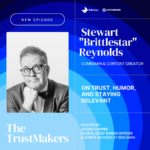By Calvin Nichols, Head of Paid Search, Wpromote
Google’s rollout of Search Generative Experience (SGE) back in Spring 2024 seemed poised to shake up the world of paid search for brands. While the impact has been relatively minimal so far, that doesn’t mean brands should still have a strategy in place for the near future. But more than a revolutionary AI search strategy to stay ahead, what brands really need is a new digital brand strategy. The problem isn’t whether AI-driven search changes how results are displayed, it’s whether your brand has taken the necessary steps to make sure that the valuable, targeted information you own is optimized for visibility. Brands need to be proactive, putting content strategies in place that will move them forward today and in the future, instead of being reactive to these updates.
It has the potential to be a total game changer for the user’s search experiences. But if your brand isn’t producing valuable, well-structured content, AI won’t magically make you relevant.
Brands need to take control. Do you want AI to decide what’s being said about your brand, or do you want to own the narrative? If SGE and similar models evolve as expected, brands that fail to establish a strong digital presence risk losing control of how they’re perceived in AI-generated search results.
Here’s the truth: Google’s SGE has the opportunity to unlock so much value for the user and, in turn, unlock value for the brands that are getting it right. Historically, Google used snippets, short, generated extracts of content, to provide quick, direct answers, allowing users to find information without additional clicks. This provided a seamless, efficient, and user-friendly experience.
Now, with SGE, there’s an added layer to it. Google is taking these snippets and adding additional layers and context to searches. Instead of simply providing an answer, users can see related searches within the same category that other users have searched for. Additionally, AI provides results based on your search history, essentially predicting user intent by suggesting follow-up questions you may have and predictively answering them with your initial search.
Brands need to have a plan in place for the future. If people are going to be utilizing SGE’s moving forward, you don’t want to sit on the sidelines and let something else answer questions on your brand, you need to be leading that conversation. As a brand, monitoring and being more active in the conversations surrounding your industry and brand will be crucial.
The solution is to be the source. As AI search becomes increasingly popular for users, brands need to already have the content in place for the AI to pull from. If you don’t, you’ll be playing a constant game of catch up.
Now more than ever, brands need to understand what they stand for—not just their own ethos, but also in relation to consumers. Often, brands sit back and hope they naturally appeal across multiple areas. For example, if you position yourselves as a premier offering, you can’t just hope that, naturally, consumers perceive you as the best bargain of the premier products in your space. You’ll need to take more of a decisive stance on who you are, what you stand for, and where you want to show up for consumers. Whether it’s premium, value or bargain categories, you need to own your lane and own it confidently.
Equally important, we anticipate that generative search will continue to pull product recommendations from reviews, meaning product quality is more important than ever, with customer reviews becoming an even larger driver of search ranking. This means that if your product or service isn’t meeting expectations, AI-driven search results will reflect that reality.
It isn’t just being involved in the conversation for the sake of it though. More than a strategy, AI search is a powerful tool that opens up new upper-funnel opportunities for brands. The real strategy is bridging the gap between brand and performance marketing, turning them into a single, unified force. Too often, the two teams are siloed, working against each other instead of together. Brand marketing focuses on awareness, while performance chases conversions. But in today’s landscape, that divide no longer works. AI search is the chance to align both strategies and drive growth at every stage of the funnel.
With this next era of search, integration needs to be happening. Think of it not as two separate efforts, but as one unified strategy to holistically grow the brand. Brand credibility improves performance, and performance metrics validate brand investments. We call it Brandformance. Regardless of the name you give it, you need to integrate the two areas together, or risk falling behind.











